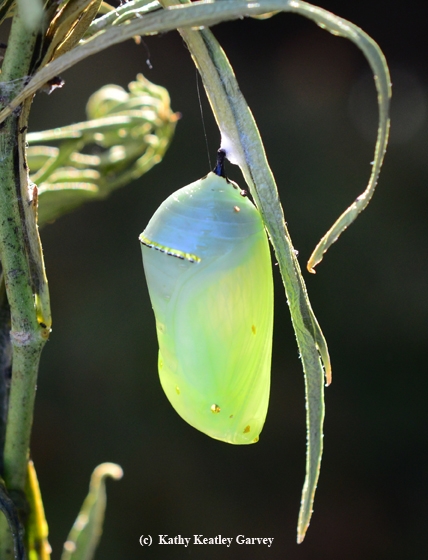
It was a dismal year in Vacaville (and other parts of California) for monarch-rearing. Of the 10 caterpillars we collected from milkweed in our pollinator garden in early September and tried to rear, only eight made it.
One caterpillar died when a sibling attacked it. Another caterpillar made it to the chrysalis stage, and then it succumbed.
"The intersegmental membranes are showing," observed butterfly guru Art Shapiro, UC Davis distinguished professor of evolution and ecology, who has researched butterflies for more than four decades and maintains a research website at http://butterfly.ucdavis.edu. "Whatever caused that, it opens the door to severe water loss, so the pupa will probably die."
Yes, it did.
Black lines rimmed the non-viable chrysalis, and then it deteriorated almost beyond recognition.
Lynn Epstein, UC Davis emeritus professor of plant pathology, photographed it under a Leica DVM6 microscope on Nov. 2. An amazing image.
Meanwhile, perhaps the eight monarchs we reared and released made it to an overwintering site along the California coast...maybe to the eucalyptus grove at the Natural Bridges State Park, Santa Cruz.
Or maybe they encountered a predator--a praying mantis or a bird.
Regardless, the declining monarch populations at the overwintering sites along coastal California are troubling.
The Xerces Society for Invertebrate Conservation, based in Portland, Ore., noted in a news release Feb. 2, 2018 that the "annual census of monarch butterflies overwintering along California's coast reveals that populations in western North America are at their lowest point in five years, despite recovery efforts. Volunteers with the Xerces Society's Western Monarch Thanksgiving Count visited more sites this past year than have ever been counted since the survey began in 1997, yet they tallied fewer than 200,000 monarchs."
“This year's numbers indicate a continuing decline in the monarch population,” noted Sarina Jepsen, the Xerces Society's endangered species program director. “Two decades ago, more than 1.2 million monarchs were recorded from far fewer coastal sites, and just last year nearly 300,000 monarchs were observed at almost the same number of sites.” Population estimates at individual sites also suggest that the western monarch population has continued to shrink. Of the 15 sites which have been monitored annually for more than two decades, 11 had lower counts than last year."
Also in the news release, Emma Pelton, conservation biologist with Xerces, said: “Counts at some of the state's largest sites were dramatically lower. Pismo Beach State Park was down by 38 percent, a private site in Big Sur was down by 50 percent, and the Monarch Butterfly Sanctuary in Pacific Grove was down 57 percent, from 17,100 to just 7,350 butterflies.”
Xerces Society officials also noted that "the few sites in which monarch numbers remained stable or increased compared to 2016, include Natural Bridges State Park, Moran Lake, and Lighthouse Field State Park, all in Santa Cruz County."
We like to think that The Vacaville Eight were The Lucky Eight.
Attached Images:
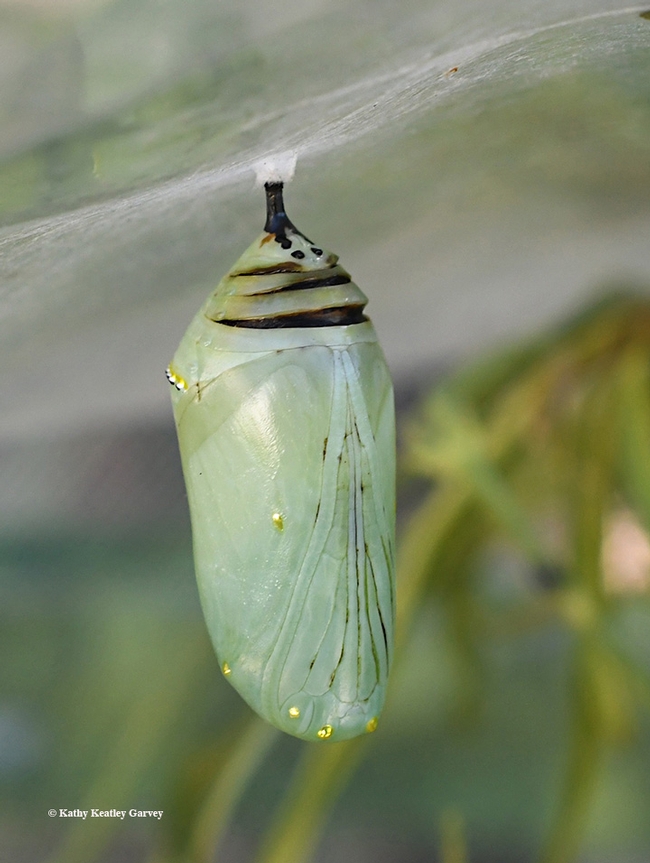
A monarch chrysalis that didn't make it. This image was taken Sept. 15. Said Art Shapiro of UC Davis: "The intersegmental membranes are showing. Whatever caused that, it opens the door to severe water loss, so the pupa will probably die." (Photo by Kathy Keatley Garvey)
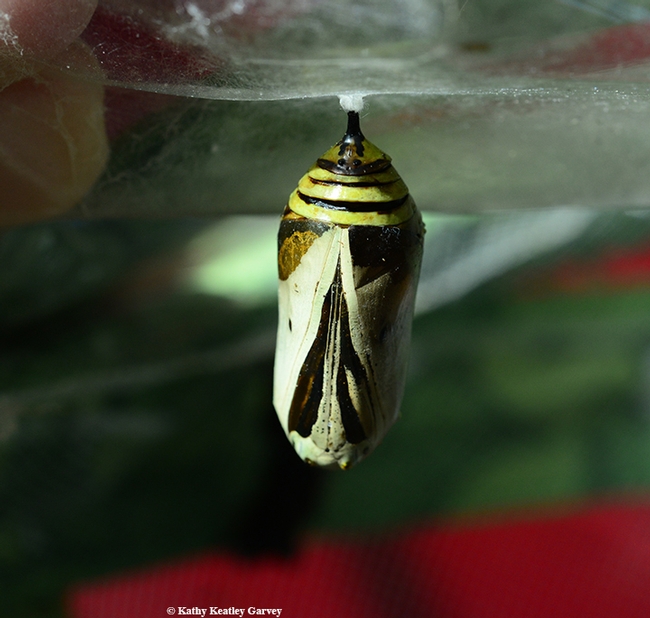
This is what the non-viable monarch chrysalis looked like on Oct. 10. (Photo by Kathy Keatley Garvey)
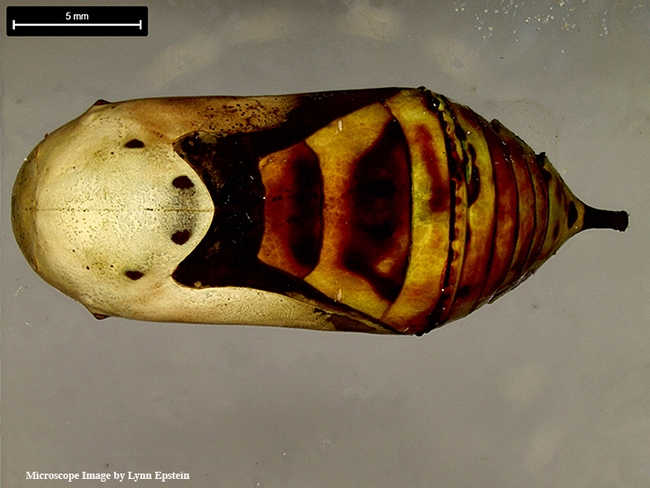
Lynn Epstein, UC Davis emeritus professor of plant pathology, captured this image of the monarch chrysalis on Nov. 2 with a Leica DVM6 microscope.
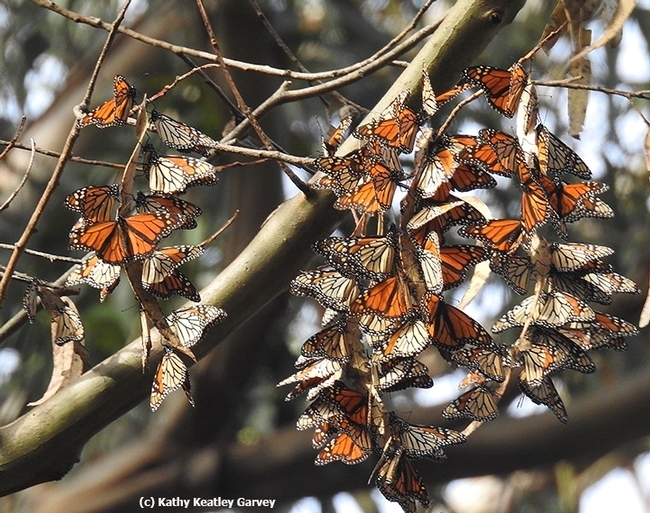
Monarchs overwintering at Natural Bridges State Park on Nov. 14, 2016. (Photo by Kathy Keatley Garvey)